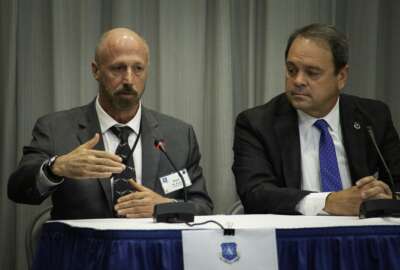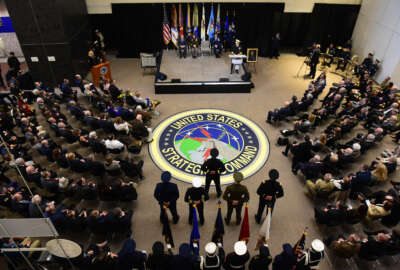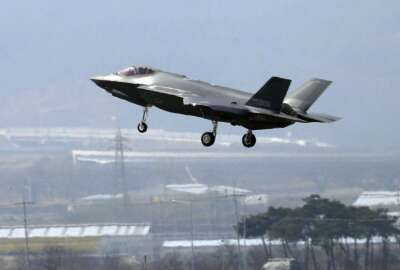
Battle of semantics leads to change in the way combatant commands are named
Morale and supporting command roles are reasons for the likely change.
A battle of semantics is likely leading to a change in the way joint unified military commands are classified, according to the second highest ranking military official.
Vice Chairman of the Joint Chiefs of Staff Gen. John Hyten said the military will change the way combatant commands refer to each other in order to clear up issues with morale and supporting command status.
Currently there are 11 unified combatant commands, four of which are considered functional: U.S. Cyber Command, U.S. Special Operations Command, U.S. Strategic Command and U.S. Transportation Command. The others are geographic.
The military will amend its Unified Command Plan so no commands are considered functions of another, and all commands will be referred to plainly as combatant commands.
“U.S. Strategic Command is the bedrock of our entire nation’s defense. The most powerful command in our nation and, without a doubt, there’s nobody who can deny that,” Hyten said Wednesday at an Air Force Association event in Washington. “STRATCOM has the most powerful weapons in the world. Nuclear submarines, bombers, ICBMs, at one time space and cyber and it was a functional command. Stand in front of your people and say, ‘We are not a warfighting command. We provide functions for others.’ Tell that to 160 sailors on the USS Tennessee going out on an alert. ‘You’re just performing a function, it’s not a warfighting mission.’ I couldn’t stand up and do that.”
Hyten said other functional commands felt the same way. For example, the leader of SOCOM — who is in charge of an elite group of troops that are frequently deployed — felt the term was a disservice.
It’s not only how the troops feel about the name though. Hyten said the functional command name caused issues during globally integrated exercises.
“In those exercises against a peer competitor you have four or five supported commanders all at the same time,” Hyten said. “By contrast, when something bad happens in the Middle East right now and the chairman of and the defense secretary talk to the president and come out of the Oval Office they pick up the phone and call Gen. Frank McKenzie at U.S. Central Command. They tell him what’s going on and what to do.”
In the future, there may be five commands that need support at the same time, which can also act independently as well.
“How can a functional combatant command be a supported command?” Hyten said. “How can a geographic command be a supported command? We ended up in this whole argument and it just doesn’t make any sense.”
The Doctrine for the Armed Forces describes a support relationship as, “by a common superior commander between subordinate commanders when one organization should aid, protect, complement, or sustain another force. The support command relationship is used by the defense secretary to establish and prioritize support between and among combatant commanders, and it is used by joint force commanders to establish support relationships between and among subordinate commanders.”
In a war that integrates many domains, the supported and supporting commands may change depending on mission.
The United States has used the combatant command structure since the end of World War II as a means of dividing areas of geographic and domain responsibility.
The most recent is U.S. Space Command, which the U.S. established in 2019. That command is an effort to organize and advance space operations as the U.S. continues to see it as a contested area.
Copyright © 2025 Federal News Network. All rights reserved. This website is not intended for users located within the European Economic Area.
Scott Maucione is a defense reporter for Federal News Network and reports on human capital, workforce and the Defense Department at-large.
Follow @smaucioneWFED
Related Stories






